Intel D975XBX: Intel brings their Bad-Axe to Market
by Gary Key on January 26, 2006 12:05 AM EST- Posted in
- Motherboards
Audio Performance
The Sigmatel STAC9221D codec on the Intel D975XBX board does not fully support 3D Hardware, EAX1, or EAX2 modes as the other on-board codecs do at this time. Consequently, its performance is highly dependent upon the CPU and gaming support will be limited to generic OpenAL or 2D modes.
Obviously, if you are a serious gamer, then a dedicated sound card is still a requirement to ensure consistent frame rate averages across a wide variety of games. We noticed in our Battlefield 2, Serious Sam II, and Half Life 2 testing that the ALC882M solution would stutter in intensive scenes, creating frame rates in the low teens momentarily. We will be testing the Realtek R1.30 drivers in our next article to see if the minimal frame rates and stutter issues have been improved.
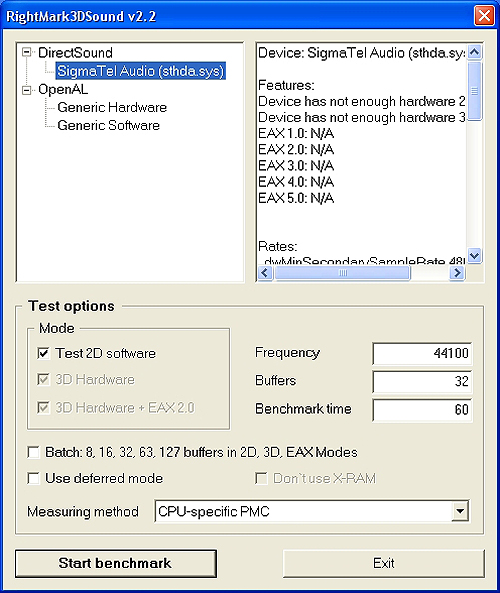
The Sigmatel STAC9221D codec on the Intel D975XBX board does not fully support 3D Hardware, EAX1, or EAX2 modes as the other on-board codecs do at this time. Consequently, its performance is highly dependent upon the CPU and gaming support will be limited to generic OpenAL or 2D modes.
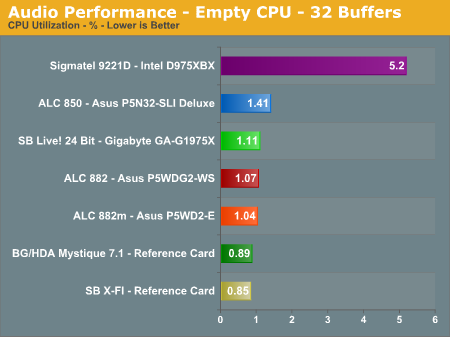

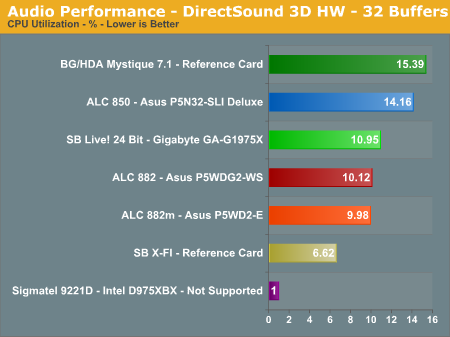
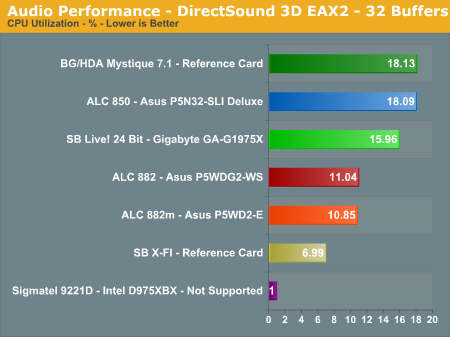
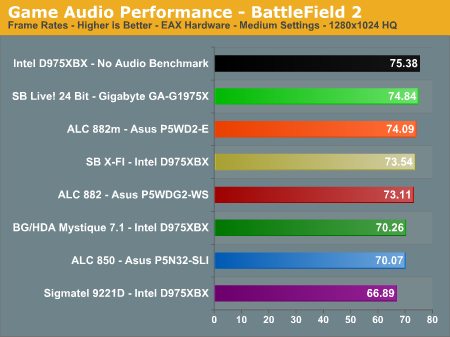
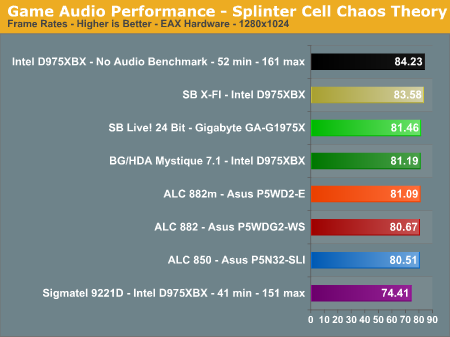
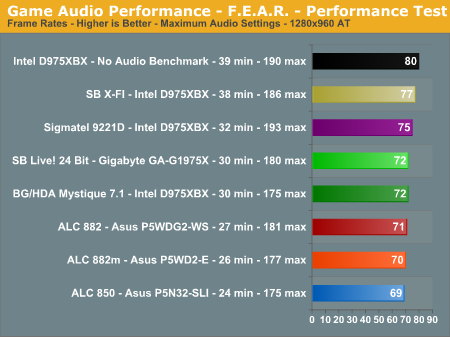
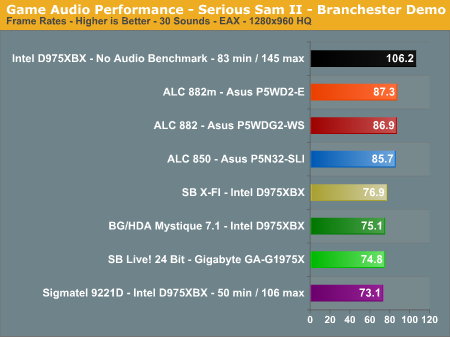
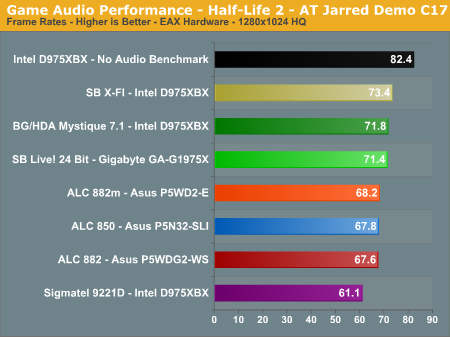
Obviously, if you are a serious gamer, then a dedicated sound card is still a requirement to ensure consistent frame rate averages across a wide variety of games. We noticed in our Battlefield 2, Serious Sam II, and Half Life 2 testing that the ALC882M solution would stutter in intensive scenes, creating frame rates in the low teens momentarily. We will be testing the Realtek R1.30 drivers in our next article to see if the minimal frame rates and stutter issues have been improved.
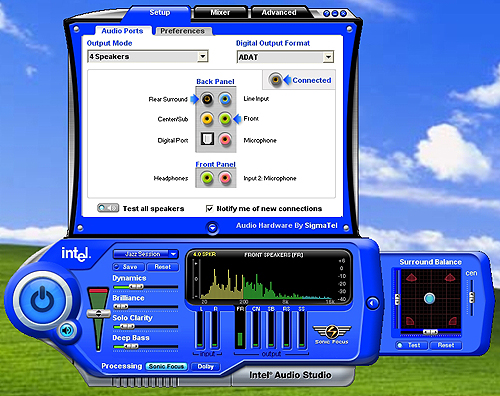
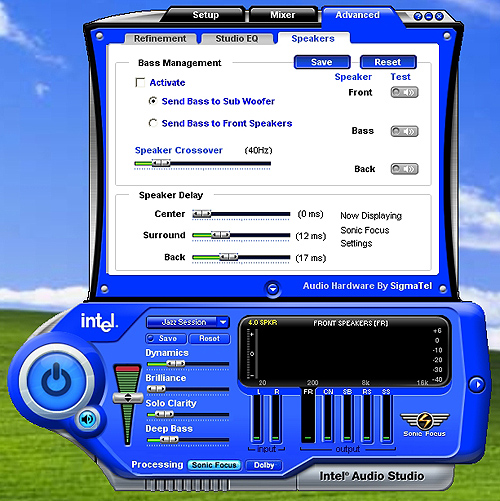










34 Comments
View All Comments
ruprecht - Thursday, January 26, 2006 - link
What the hell is wrong with Americans? Just say bad ass, it's hardly a hard-core expletive!yacoub - Friday, January 27, 2006 - link
Professional image versus immaturity. Anandtech has a professional image and likely wants to maintain it.Griswold - Friday, January 27, 2006 - link
...land of the free. Whatever.DigitalFreak - Thursday, January 26, 2006 - link
We're prudes! Well, not me, but...Avalon - Thursday, January 26, 2006 - link
This board is pretty pitiful, IMO, when several other solutions out there can outpace it. Unless the board is offered cheaper than the competition, I see no reason to buy it.JarredWalton - Thursday, January 26, 2006 - link
Intel's proven reliability and support. Some people will happily give up 10% or more performance just for a major name like Intel. I'm not one of them, but they do exist.... :)yacoub - Friday, January 27, 2006 - link
But you pay a lot more for it...Zebo - Friday, January 27, 2006 - link
No knowledgeable computer hardware expert seriously believes that there is enough of a stability difference between the platforms to warrant a scientific comparison or research study by an objective outsider. Most "issues" stem from OE or bloated buggy SW and drivers, simple as that - not the hardware itself.Toms tries such a comparison but as you know a sample size of one is'nt very scientific so we'll discount intels 11 reboots two Asus boards, two intel boards, one gigabit board to AMD's 0 reboots in the stress test.:D:)
Zebo - Friday, January 27, 2006 - link
Or should I say where's the proof over anything else? Sounds like urban legend to me. Something the intel boys claim with almost programed resposivness then stop replying in that thread once asked for proof.Sunbird - Thursday, January 26, 2006 - link
Excuse my ignorance, is Bad Axe a new american slang word?